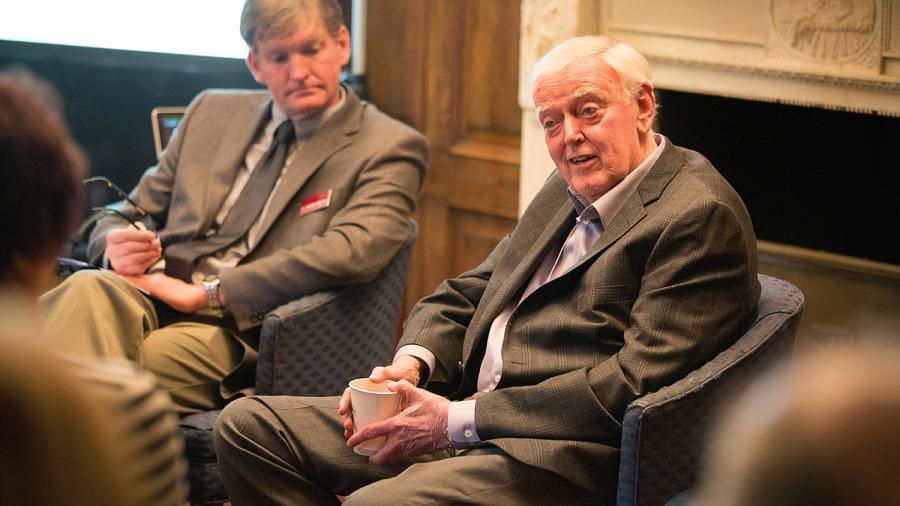Westmont Magazine The Liberal Arts Online?

Chris Hoeckley and Alexander Astin
Westmont’s Gaede Institute for the Liberal Arts sponsors a conference examining the role of MOOCs in liberal arts education.
Are MOOCs (Massive Open Online Courses) the next big thing in higher education? Do their merits (access, connection, innovation, low cost) outweigh concerns (anonymity, low completion rates, weak performance)?
The 13th Annual Conversation on the Liberal Arts tackled these questions in February. Scholars throughout the country attended “MOOCing the Liberal Arts? Technology and Relationship in Liberal Arts Education.” The Gaede Institute for the Liberal Arts sponsored the event.
“We sought to better understand MOOCs and the other technologies that are creating new ways of teaching,” says Chris Hoeckley, director of the Gaede Institute. “The conference reflected on the promise and challenges of new electronic learning contexts for liberal arts education.”
Some speakers expressed skepticism about MOOCs and their ability to promote relationships among the tens of thousands of students enrolled in a single course. In contrast, liberal arts education creates a community of learners, encouraging close interaction between students and faculty.
But other scholars argued that MOOC models and other technological innovations might enhance the relational dimension of learning and even correct some problems with the traditional classroom. While online classes lose face-to-face conversations, they can widen and diversify the con-versation beyond the physical class-room through sites such as Facebook, Twitter and Tumblr.

Alexandra Juhasz speaks at the conference.
Speakers addressed a range of topics. George Siemens, who teaches at the University of Texas at Arlington, asked, “What Will MOOCs Do to Traditional Education?” Alexandra Juhasz, Pitzer College, and Elizabeth Losh, UC San Diego, spoke on “MOOCs, the Morning After.” Owen Youngman, Northwestern University, presented “Studying the Students: Lessons from my Worldwide Class-room.” Barry Bandstra, Hope College, offered “What Would an Online Course Look Like at Your Institution? Let’s Build One and Find Out.”
Alexander Astin, founding director of the Higher Education Research Institute at UC Los Angeles, presented “To MOOC or not to MOOC the Liberal Arts: Why not Consult the Evidence?” He concluded that “an entire liberal arts curriculum consisting mainly of MOOCs would constitute a poor substitute for a traditional undergraduate liberal arts education.”
Astin drew on years of research to list the key elements contributing to a high quality undergraduate education: frequent faculty-student interaction, frequent student-student interaction, courses that emphasize writing, independent research projects and research with faculty among others. Many of these practices feature student involvement, “whereby students invest time and energy in activities related to the educational process.” The more students get involved in their education, the better they learn. “It is difficult to see how a MOOC could even begin to replicate the richness and learning potential of traditional campus-based instruction,” Astin said.